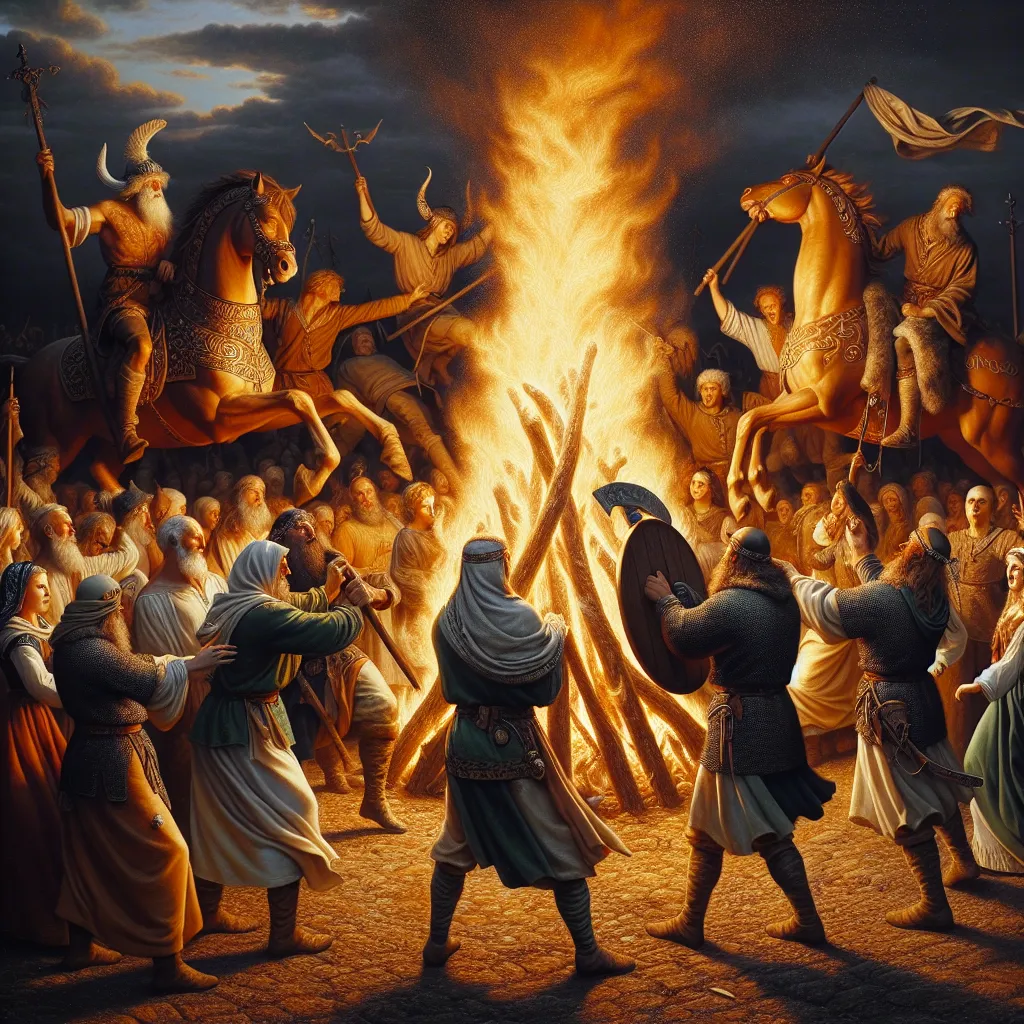
- Published on
- Authors

- Name
- You
Introduction
Norse mythology is a rich tapestry woven with tales of gods, giants, and cosmic events. Central to this mythos are the festivals, which not only honor the deities but also align closely with the natural cycles of the seasons. These gatherings, filled with rituals and celebrations, serve as a bridge between the mundane and the divine. This article takes a closer look at three major Norse festivals: Yule, Ostara, and Midsummer.
Yule: Embracing the Long Winter Night
History and Significance
- Date: December 21st (Winter Solstice)
- Deities Honored: Odin, Thor, Freyr
- Themes: Rebirth, Protection, Strength
Yule marks the winter solstice, the longest night of the year, and a time of rebirth and renewal. Ancient Norse people believed that during Yule, the veil between the mortal world and the spiritual realm was at its thinnest. Odin, often referred to as the Yule Father, would ride through the sky on his eight-legged horse, Sleipnir.
Modern Practices
| Rituals | Description |
|---|---|
| Burning the Yule Log | A massive wooden log, traditionally lit to bring light into the home and ward off evil spirits. |
| Feasting | A grand feast to celebrate abundance and share warmth amidst the coldest period of the year. |
| Gift-Giving | Reflects ancient customs of offering sacrifices to the gods, now adapted to exchanging gifts with family. |
Ostara: The Fertility Festival
History and Significance
- Date: March 21st (Spring Equinox)
- Deities Honored: Freya, Eostre
- Themes: Fertility, Renewal, Balance
Ostara celebrates the spring equinox when day and night are of equal length. This festival honors the awakening of the earth and the renewed fertility of the land. The goddess Eostre, from whom Easter derives its name, is celebrated for her role in bringing spring's renewal.
Modern Practices
| Rituals | Description |
|---|---|
| Egg Decorating | The egg, a symbol of new life, is decorated and used in various rituals to invoke fertility and growth. |
| Planting Seeds | Symbolic acts of planting seeds reflect the hopes for a prosperous year and good harvest. |
| Balancing Eggs | An old custom involves attempting to balance an egg on its end to symbolize equilibrium and renewal. |
Midsummer: Celebrating Light and Growth
History and Significance
- Date: June 21st (Summer Solstice)
- Deities Honored: Baldr, Freyr
- Themes: Light, Growth, Joy
Midsummer, or the summer solstice, is the longest day of the year, symbolizing peak fertility and the height of life. It is a time of joy and celebration, often associated with the god Baldr, whose story is one of both light and tragedy.
Modern Practices
| Rituals | Description |
|---|---|
| Maypole Dance | Participants dance around a pole adorned with flowers and ribbons, symbolizing the prosperity and unity. |
| Bonfires | Bonfires are lit to ward off evil spirits and celebrate the sun's power at its zenith. |
| Herbal Gatherings | Picking and blessing herbs which are believed to have potent magical properties during Midsummer. |
Conclusion
The Norse festivals of Yule, Ostara, and Midsummer offer a profound reflection on the cyclical nature of life and the deep connection between humanity and the cosmos. By honoring the gods, following ancient rituals, and celebrating the natural world's transformations, we can find a harmonious balance that integrates both mystical traditions and modern scientific awareness.
Revel in these celebrations, for they are not just remnants of the past but a continuous thread linking us to the universe's ever-turning wheel.
